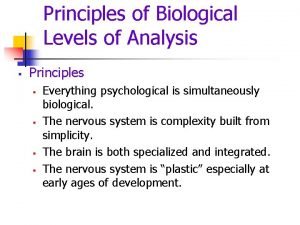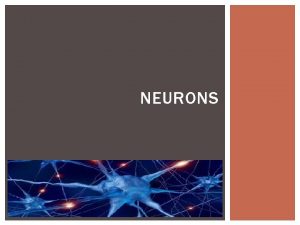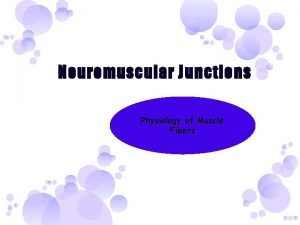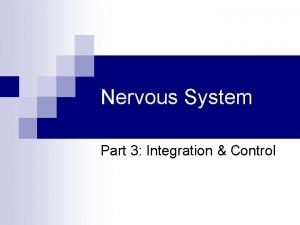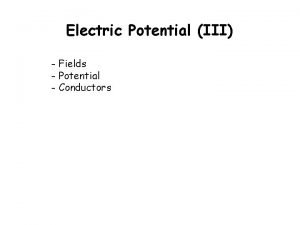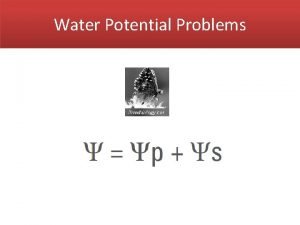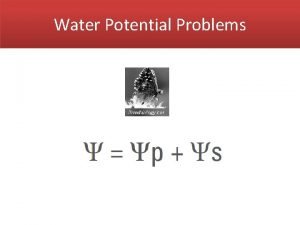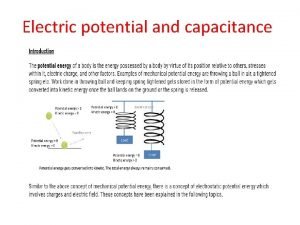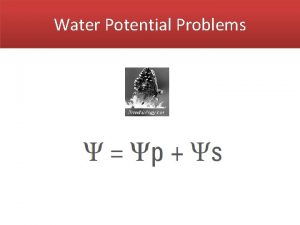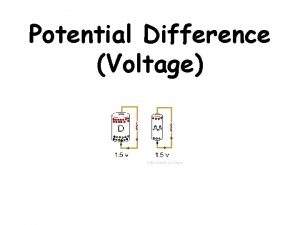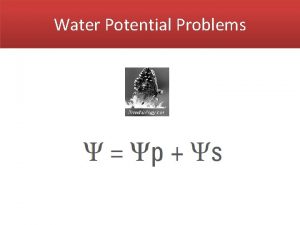Loai Alzghoul Loai physiologyyahoo com Action Potential ALL






















- Slides: 22

Loai Alzghoul Loai. physiology@yahoo. com

Action Potential = ALL x NOTHING

The Action Potential Equilibrium potential of sodium (+60 m. V) - 75 m. V K Na K K Na Passive increase in positive charge Electrotonic potential Resting potential (-75 m. V) Equilibrium potential of potassium (-95 m. V) 3

The Action Potential Equilibrium potential of sodium (+60 m. V) - 55 m. V K threshold Electrotonic potential Na K K Na Opening of voltage-gated sodium channel Resting potential (-75 m. V) Equilibrium potential of potassium (-95 m. V) 4

The Action Potential Equilibrium potential of sodium (+60 m. V) - 40 m. V K Na K K Na Depolarisation due to sodium influx Opening of voltage-gated sodium channel Electrotonic potential Resting potential (-75 m. V) Equilibrium potential of potassium (-95 m. V) 5

The Action Potential voltage-gated sodium channels turn to the inactivation phase Equilibrium potential of sodium (+60 m. V) + 50 m. V K Na K K Na Depolarisation due to sodium influx Inactivation of voltage-gated sodium channel Electrotonic potential Resting potential (-75 m. V) Equilibrium potential of potassium (-95 m. V) 6

The Action Potential Equilibrium potential of sodium (+60 m. V) + 50 m. V K Na K K Na Depolarisation due to sodium influx opening of voltage-gated potassium channel Electrotonic potential Resting potential (-75 m. V) Equilibrium potential of potassium (-95 m. V) 7

The Action Potential Equilibrium potential of sodium (+60 m. V) - 85 m. V Repolarization due to potassium influx K Na K K Na Depolarisation due to sodium influx opening of voltage-gated potassium channel Electrotonic potential Resting potential (-75 m. V) Equilibrium potential of potassium (-95 m. V) 8

The Action Potential Membrane potential approaches the ENa and voltage-gated sodium channels turn to the Equilibrium potential of sodium (+60 m. V) inactivation phase - 75 m. V repolarization due to potassium influx K Na K K Na Depolarisation due to sodium influx closing of voltage-gated potassium channel Electrotonic potential Resting potential (-75 m. V) Hyperpolarising afterpotential Repolarisation due to potassium influx 9

The Action Potential Inactivation of voltage-controlled sodium channel Equilibrium potential of sodium (+60 m. V) Opening of voltagecontrolled potassium channel Opening of voltagecontrolled sodium channel threshold Electrotonic potential Resting potential (-75 m. V) Hyperpolarization due to more outflux of potassium ions Dentistry 07 10

Properties of action potentials • Action potentials: +60 • are all-or-none events 0 m. V threshold Stimulus -70 • APs do not summate - information is coded by frequency not amplitude. 11

Recording membrane potential m. V - 60 + - 30 + -0 - 30 - Electrotonic potential Localized non propagated Action potential - 60 - 90 - Dentistry 07 12

Graded Potentials

Excitable cell: NEURON and MUSCLE CELL

Neuron F 8 -2 • Axons carry information from the cell body to the axon terminals. • Axon terminals communicate with their target cells at synapses.


Communication Between Neurons • Electrical synapse Chemical


Recording of Resting and action potentials • It is recorded by cathode ray oscilloscope – -70 m. V + Voltmeter it is negative in polarized (resting, the membrane can be excited) state with the potential difference inside the cell membrane is negative relative to the outside. Dentistry 07 + + + – – – + – + – – + + 19

Terminology Associated with Changes in Membrane Potential F 8 -7, F 8 -8 • Depolarization- a decrease in the potential difference between the inside and outside of the cell. • Hyperpolarization- an increase in the potential difference between the inside and outside of the cell. • Repolarization- returning to the RMP from either direction. • Overshoot- when the inside of the cell becomes +ve due to the reversal of the membrane potential polarity.


 Dậy thổi cơm mua thịt cá
Dậy thổi cơm mua thịt cá Cơm
Cơm Neuronal pool
Neuronal pool Graded potential vs action potential
Graded potential vs action potential Graded potentials
Graded potentials Graded potential vs action potential
Graded potential vs action potential Saltatory conduction
Saltatory conduction Source of bioelectric potential is dash in nature
Source of bioelectric potential is dash in nature Hypopolarization
Hypopolarization Neuromuscular junction
Neuromuscular junction Axon hillock
Axon hillock Action potential resting potential
Action potential resting potential Absolute refractory period
Absolute refractory period Quizdraw
Quizdraw All or none principle of action potential
All or none principle of action potential Three basic parts of a neuron
Three basic parts of a neuron All or none action potential
All or none action potential All or none action potential
All or none action potential Name all the lines name all the segments name all the rays
Name all the lines name all the segments name all the rays How to find pressure potential
How to find pressure potential Flaccid turgid and plasmolysis
Flaccid turgid and plasmolysis Understanding water potential
Understanding water potential Water potential
Water potential












